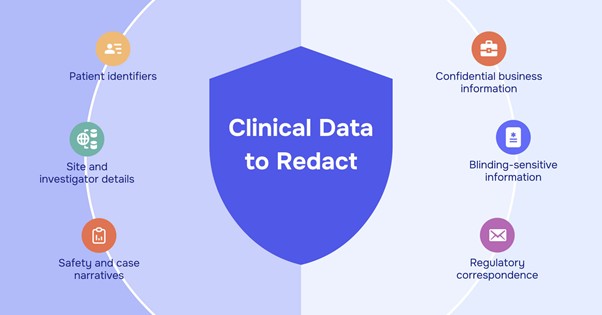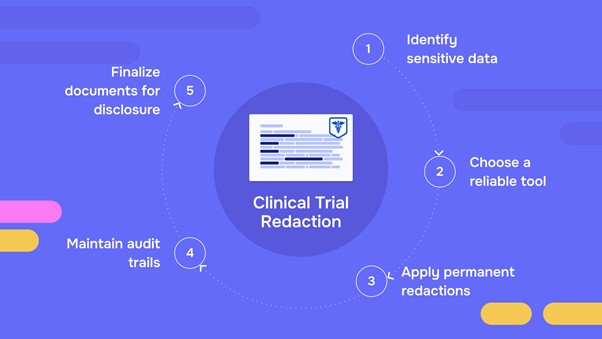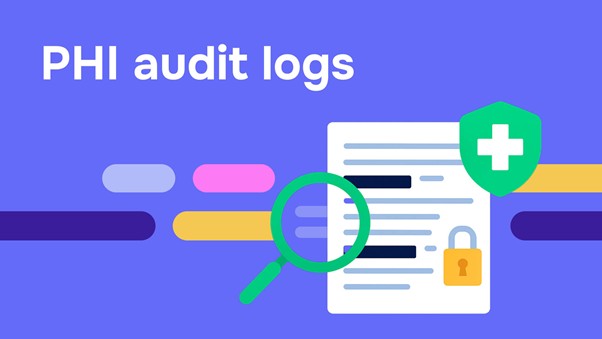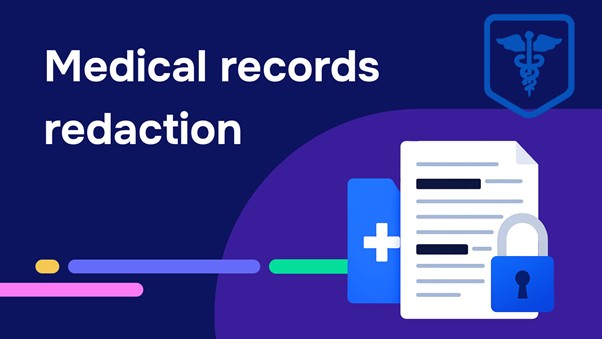Automated redaction software for clinical research

Automated redaction software for clinical research
Protect patient privacy, preserve study integrity, and meet regulatory requirements with Redactable’s AI-powered redaction platform.
Clinical trials generate vast amounts of sensitive data protocols, informed consent forms (ICFs), case report forms (CRFs), safety reports, imaging files, and correspondence with investigators, sites, and regulators. Sponsors and CROs must share these documents with ethics committees, regulators, partners, and sometimes the public. But if patient identifiers, site details, or blinded information leak, the risks include protocol violations, regulatory penalties, or even trial suspension.
Redactable helps research teams apply permanent redaction across study documents, automate detection of protected health information (PHI) and personal identifiers (PII), and maintain complete audit trails. The result: faster disclosure processes, consistent compliance, and stronger data protection across clinical operations.

How clinical trials data disclosure works: process, timelines, and challenges
Clinical documents move through multiple checkpoints during a trial ethics review, safety reporting, regulatory submission, and sometimes journal publication. At each stage, sponsors and CROs must:
- Verify what information is required to be shared.
- Identify PHI, PII, or confidential business details that must be withheld.
- Ensure blinding is preserved and randomization codes are protected.
- Release documents within regulatory timelines (often days, not weeks).
Manual review and black-box redaction are slow, error-prone, and can leave metadata or hidden layers exposed. Any missed identifier can compromise patient privacy or trigger non-compliance findings during an inspection.
Sensitive information that must be redacted in clinical trials

Clinical trial documents carry multiple categories of sensitive data that must be removed before sharing externally. Failure to do so can lead to patient re-identification, unblinding, or exposure of proprietary details.
Patient identifiers: Names, addresses, dates of birth, contact details, and medical record numbers fall under HIPAA-defined PHI. These elements must always be redacted to protect participants and maintain compliance.
Site and investigator details: Hospital names, site addresses, investigator signatures, and staff contact information can link data back to individuals or institutions. Proper redaction shields both privacy and study confidentiality.
Safety and case narratives: Adverse event reports, laboratory data, and imaging files often contain embedded identifiers. Redaction ensures safety disclosures do not compromise patient privacy.
Confidential business information: Trial protocols, investigational product batch numbers, and site contract terms are commercially sensitive. Redacting them protects intellectual property and competitive interests.
Blinding-sensitive information: Treatment codes, randomization lists, and other identifiers can reveal study arms. Careful redaction preserves the blind and safeguards trial integrity.
Regulatory correspondence: Emails, memos, and draft reports often contain privileged or sensitive operational details. Redacting this content prevents unnecessary disclosure during submissions or audits.
Permanent redaction vs visual masking
Traditional redaction methods, such as blacking out text in PDFs or placing white boxes over data, leave trial teams exposed. Hidden metadata, copy-paste functions, and transparent objects can reveal what was meant to be concealed.
Redactable ensures permanent redaction by removing:
- Text, numbers, and identifiers
- Metadata and hidden layers
- Transparent or covered objects
- Embedded images, charts, and scanned signatures
This eliminates the risk of accidental disclosure and supports compliance with HIPAA, GDPR, and ICH-GCP.
Interested in learning more?
How to redact clinical trial documents effectively

Redaction in clinical research must balance patient privacy, regulatory compliance, and trial integrity. These five steps outline a secure and efficient process that reduces errors and accelerates disclosure.
Identify sensitive data
Pinpoint PHI, PII, site identifiers, safety details, and confidential business information that must be protected. Careful identification ensures nothing slips through and protects both patients and sponsors.
Choose a reliable tool
Manual redaction slows trial timelines and creates compliance risk. PDF editors usually only cover the data visually, leaving traces behind that are accessible by anyone. Automated platforms like Redactable apply AI-driven detection and batch processing to scale securely across studies, even with large volumes of files.
Apply permanent redactions
Redactable’s AI identifies and removes sensitive information, assigns reason codes, and ensures redacted content cannot be recovered. This creates a permanent safeguard that regulators can trust.
Maintain audit trails
Every redaction is logged with user, timestamp, and reason. Certificates and activity logs provide verifiable proof during regulatory inspections and internal QA reviews, simplifying oversight.
Finalize documents for disclosure
Redactable produces finalized, permanently redacted files with certificates. Teams can confidently share submissions with regulators, IRBs/ECs, or journals without exposing sensitive data, saving time and mitigating risk.
Redactable’s AI-powered redaction software for clinical research
Redactable provides a secure, enterprise-ready platform tailored to the demands of clinical trials.
Key features and benefits:
- AI-driven detection – Automatically identify PHI, PII, site identifiers, safety details, and business-sensitive data.
- Batch processing – Upload and OCR multiple trial documents at once to save time.
- Custom templates – Apply standardized redaction rules across studies for consistency.
- Blinding protection – Exclude sensitive trial codes from automated redactions to preserve study integrity.
- Detailed audit logs – Track all actions for regulatory inspections and internal QA.
- Collaboration tools – Enable real-time review and approval with role-based permissions.
- Draft workflows – Generate preview files for compliance review before finalizing.
- Redaction certificates – Produce verifiable proof of permanent redaction for submission packages.
Redactable is designed for sponsors, CROs, medical writers, and regulatory teams that need to process large volumes of study documents quickly, securely, and consistently.
Frequently asked questions
Protocols, ICFs, safety narratives, and CRFs are submitted to regulators, IRBs/ECs, and sometimes journal publishers. Sensitive data must be removed before sharing.
Patient identifiers, site details, investigator signatures, randomization codes, safety data with PHI, and confidential business content all require consistent redaction.
The platform automates detection, permanently removes sensitive data, applies exemption or reason codes, maintains audit trails, and generates certificates aligned with HIPAA, GDPR, and GCP requirements.
Yes. Redactable processes PDFs with hundreds or thousands of pages without any issues. Our pricing is based per document, not per page, so you pay the same whether your PDF is 10 pages or 1,000 pages. This makes it cost-effective for clinical research organizations handling lengthy study protocols, case report forms, or comprehensive clinical datasets that require redaction for regulatory submissions or data sharing.
No. Redactable ensures permanent removal of text, metadata, and images, making redacted content impossible to recover.
Yes. Teams can use exclusion lists and templates to protect treatment codes and randomization details, ensuring the blind is never compromised.
Absolutely. It connects with cloud storage platforms like OneDrive, SharePoint, and Dropbox, and supports collaborative review across sponsor, CRO, and QA teams.




.jpg)


